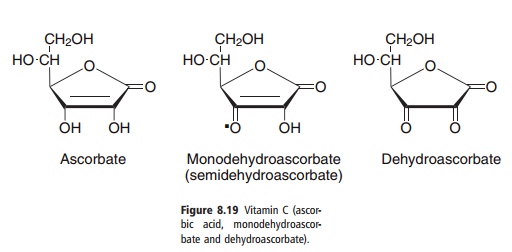Chapter: Introduction to Human Nutrition: The Vitamins
Vitamin C (ascorbic acid) - Human Nutrition
Vitamin C (ascorbic acid)
Vitamin C is a vitamin for only a limited number of vertebrate
species: humans and the other primates, the guinea pig, bats, the passeriform
birds, and most fishes. Ascorbate is synthesized as an intermediate in the
gulo-nolactone pathway of glucose metabolism; in those vertebrate species for
which it is a vitamin, one enzyme of the pathway, gulonolactone oxidase, is
absent.
The vitamin C deficiency disease, scurvy, has been known for
many centuries and was described in the Ebers papyrus of 1500 BC and by
Hippocrates. The Crusaders are said to have lost more men through scurvy than
were killed in battle, while in some of the long voyages of exploration of the
fourteenth and fifteenth centuries up to 90% of the crew died from scurvy.
Cartier’s expedition to Quebec in 1535 was struck by scurvy; the local native
Americans taught him to use an infusion of swamp spruce leaves to prevent or
cure the condition.
Recognition that scurvy was due to a dietary defi-ciency came
relatively early. James Lind demonstrated in 1757 that orange juice and lemon
juice were pro-tective, and Cook kept his crew in good health during his
circumnavigation of the globe (1772–1775) by stopping frequently to take on
fresh fruit and vegeta-bles. In 1804 the British Navy decreed a daily ration of
lemon or lime juice for all ratings, a requirement that was extended to the
merchant navy in 1865.
Vitamin C is found in fruits and vegetables. Very significant
losses occur as vegetables wilt, or when

Figure 8.19 Vitamin C (ascor-bic acid, monodehydroascor-bate and
dehydroascorbate).
they are cut, as a result of the release of ascorbate oxidase
from the plant tissue. Significant losses of the vitamin also occur in cooking,
both through leaching into the cooking water and also atmospheric oxida-tion,
which continues when foods are left to stand before serving.
Related Topics